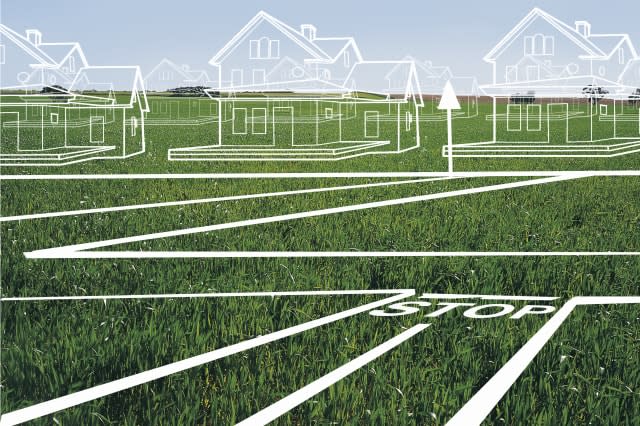Enough brownfield 'for 1 million homes'

England has enough suitable "brownfield" land to build almost a million new homes, campaigners have said.
More than 400,000 homes could be built on previously developed land which already has outline or detailed planning permission, according to information from local authorities compiled by the Campaign to Protect Rural England (CPRE).
And over 550,000 more could be accommodated on vacant or derelict land that does not have planning permission, the research by CPRE said.
Almost half (44%) of the vacant space is located in the South East, East of England and London. In the capital, where there is huge pressure for housing, 146,000 homes could be built on brownfield land, a report by the organisation said.
In total the report identifies enough brownfield land for 976,000 homes, providing the country with a four-year supply of new housing even if no other land is used.
CPRE said the figure was an underestimate as it does not include underused land such as car parks which could be used for housing.
Some brownfield sites have been identified as important wildlife hotspots for creatures such as rare beetles, but CPRE said new research suggests just 8% of brownfield land is important habitat, leaving plenty for development.
But the campaign group is concerned that new national planning rules do not prioritise brownfield development, which means Green Belt and greenfield land is being built on instead.
Barriers to developing brownfield land include the costs of and providing local infrastructure, difficulties for small and medium-sized builders trying to get into the market, the availability of cheaper greenfield sites and the lack of accurate data on brownfield land, the report said.
CPRE is calling for the reintroduction of a clear and consistent "brownfield first" policy, and other measures to boost use of previously developed land.
These could include giving the Homes and Communities Agency greater powers and resources to develop large and difficult sites, a proactive approach to identifying brownfield land and incentives for smaller building firms to develop smaller sites.
Paul Miner, planning campaign manager at CPRE, said: "This research demonstrates the huge existing capacity for housing on brownfield land.
"At a time when there is great pressure on our green spaces, utilising this land through a brownfield first policy would protect our countryside and regenerate urban areas.
"We want this new, authoritative evidence to lead to a sustained focus on suitable brownfield land.
"We can and must do more to get these sites redeveloped,whether it be reviving the National Land Use Database or implementing strong local plans to deal with multiple landowners on difficult sites."
Housing and planning minister Brandon Lewis welcomed the report which he said illustrated the scope for building new homes and protecting the countryside.
"This Government wants to see the maximum amount of brownfield land being used to build new homes, whilst also maintaining protections for our beautiful countryside.
"That is why our planning reforms encourage councils to use brownfield land for new buildings, free up disused public sector land for redevelopment and why we've invested £235 million into bringing 80,000 long-term empty homes back into use since 2010.
"We are proud to be building more homes to support hard-working families and help first-time buyers on to the property ladder."

Read more on AOL Money
Fury as neighbour over-extends inches from home
Family must demolish dream home - and pay for the privilege



